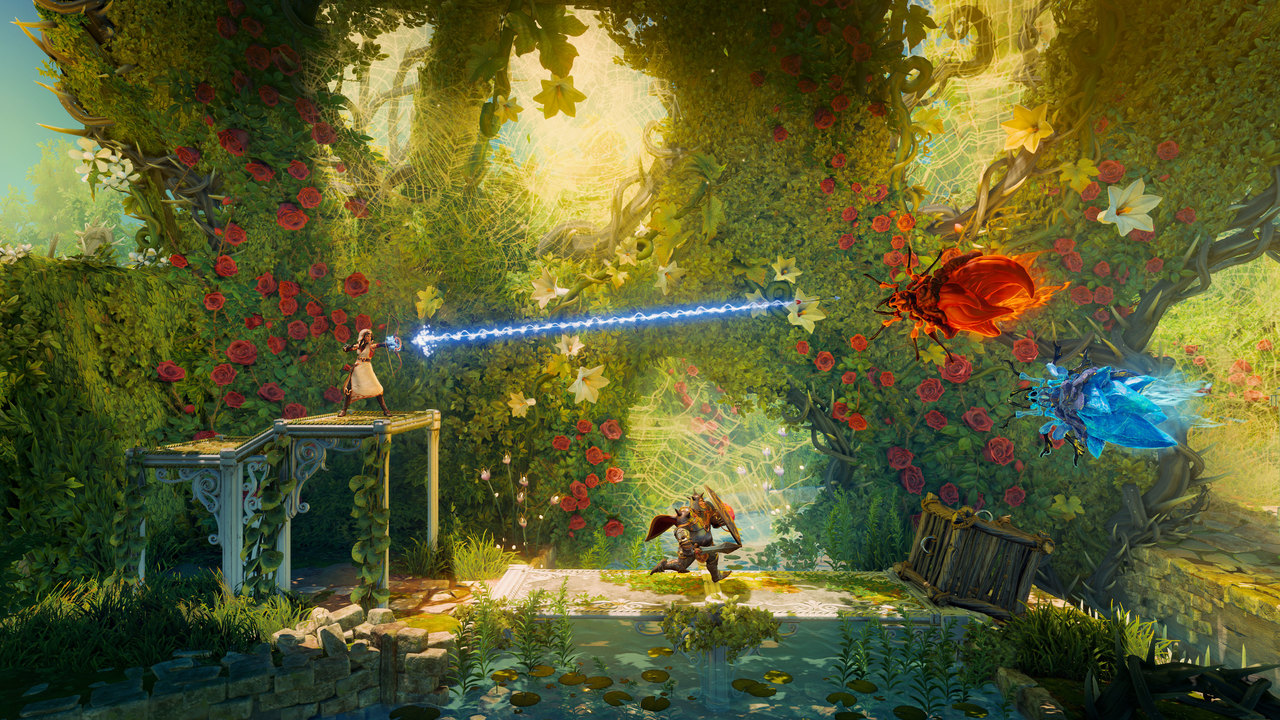Trine is a series that you may or may not have heard of. It’s definitely got a huge cult following of people who love it, but it might not be a household name in games quite yet. It strikes a weird balance of being one of the biggest little games out there, and that’s part of what gives Trine so much charm and personality.
The worlds in Trine 4 are gorgeously detailed as the series returns to it’s 2D platformer roots. Like fighters trending away from omnidirectional movement and refocusing on the 2D plane, Trine simply works better as a 2D puzzle platformer. The story follows the same three characters, Amadeus the Wizard, Pontius the Knight, and Zoya the Thief, each who have different abilities to help them overcome the challenges in the levels. The player can switch to any of the characters at any time to solve puzzles, so it’s entirely possible to play the game alone, but it’s a much better experience when played with a friend or three. Yup, there’s four-player co-op, and any player can be any combination of the three characters. You could have four wizards if you want, or two Knights and two Thieves.
Before being allowed to play, a couple of developers ran us through a few levels, showing us how the characters’ abilities work together to get through difficult puzzles. The Wizard can summon objects. The Knight can bounce light, water, and other items off of his shield. The Thief can shoot arrows with ropes attached to create bridges. These are the very basic base level abilities and they’ll be evolved and added to throughout the game, but it was really interesting to see not just how these abilities work together, but the multiple ways they could be used to solve problems in the levels.
For playing the game, I was put into the shoes of Pontius the Knight, essentially his introduction level that opens the game and teaches the player how to use his abilities. While I didn’t get the opportunity to go hands-on with the synergy in abilities between characters, playing as Pontius reminded me of why I loved the original Trine games so much. They recall a simpler time of gaming while also escaping the traditionally “retro” feel that games like this often espouse. Trine 4 then ends up looking and feeling like a game that belongs in 2019.
Pontius’ abilities are fun to use. He can use his shield to reflect beams of light and redirect water flow to activate various switches and grow plants. I needed to use this in a boss fight to reflect light a weaken a powerful foe, dealing extra damage once he was hit by the errant sunshine. This opening level was very basic, especially given that it only had a single character, but it did precisely what it was intended to do: It got me itching for more Trine 4.
What I’ve seen of Trine 4: The Nightmare Prince so far brings back everything that I loved about the original Trine trilogy. The banter between the characters is witty and a delight to listen to. The environments are beautifully designed with an expansiveness that far exceeds the seemingly simple 2D plane the game is built on. And the gameplay has both a depth and a simplicity that makes the game easy to pick up and play, but extremely rewarding as you explore its many nuances.






